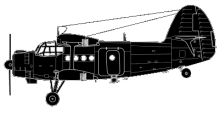Incident Overview

Description
The Yak-40 departed Ashgabat, Turkmenistan at 18:57 MSK on a domestic flight to Chardzhou Airport. Weather at Chardzhou was reported to the flight crew as being: wind 280ø 8 m/s with gusts of 12 m/s, visibility more than 7000 m, thunderstorm with rain. Weather deteriorated as the aircraft was descending towards the airport. At 20:00 hours wind had shifted to 320ø and visibility had decreased to 5000 meters. The crew were not informed of these changes. During the final approach the aircraft deviated from the glide path (45-55 m too high), forcing the crew to carry out a missed approach. The aircraft circled the airport in a non-standard way due to the presence of a thunderstorm cell in the northern part of the airport. The second approach was conducted visually in a thunderstorm with torrential rain. The aircraft deviated laterally from the intended approach path and descent was continued while the crew was trying to locate the runway. The aircraft collided with a mast at a height of 12 m at a distance of 340 m after the end of the runway and 250 meters to the right of the runway axis. The aircraft impacted the ground and caught fire.
Source of Information
https://www.airhistory.net/info/soviet.php, http://airdisaster.ru/database.php?id=1205https://www.airhistory.net/info/soviet.php, http://airdisaster.ru/database.php?id=1205Primary Cause
Weather conditions ? particularly a thunderstorm and reduced visibility ? led to deviations from the glide path and a missed approach.Weather conditions ? particularly a thunderstorm and reduced visibility ? led to deviations from the glide path and a missed approach.Share on:




